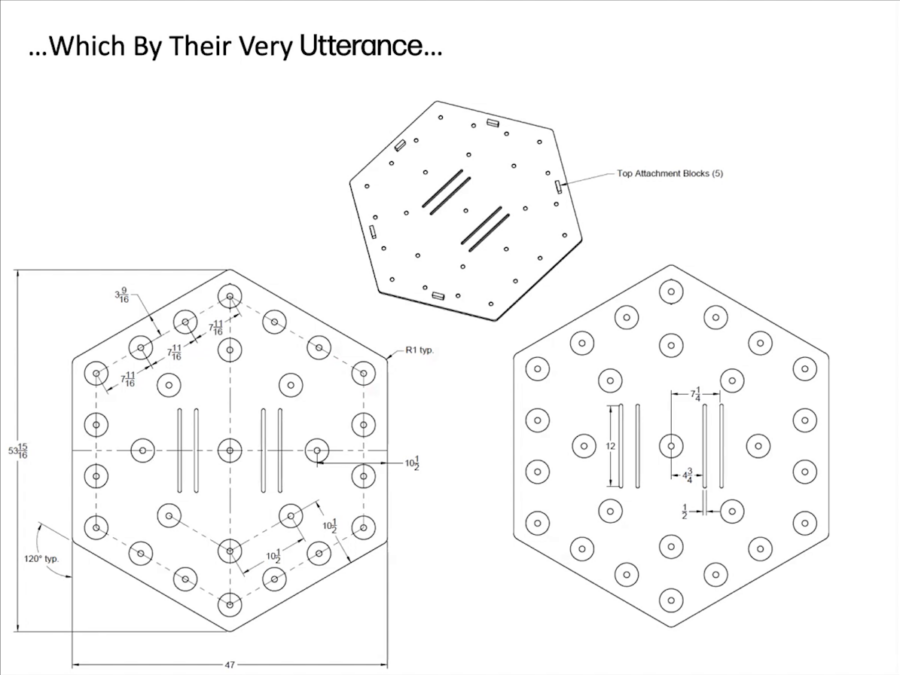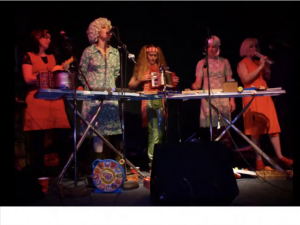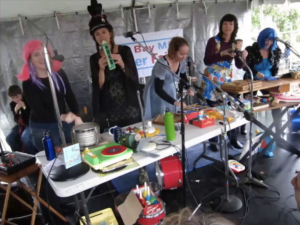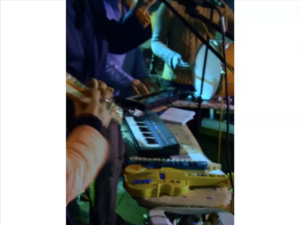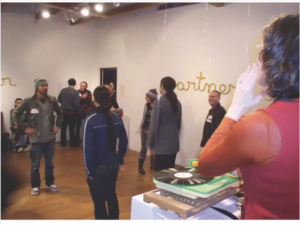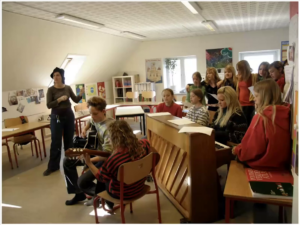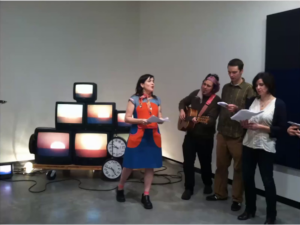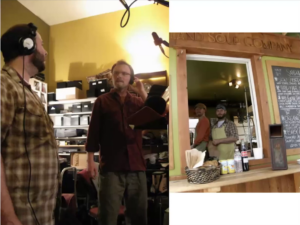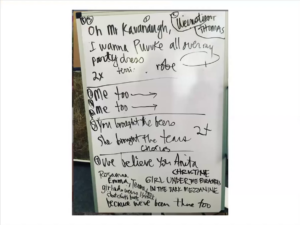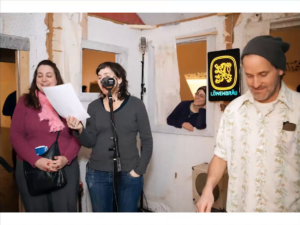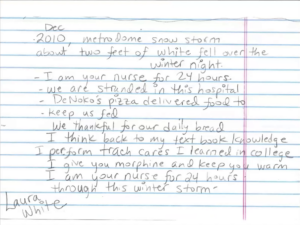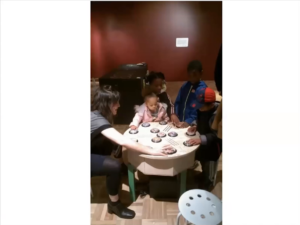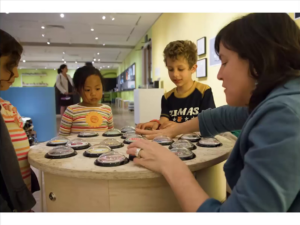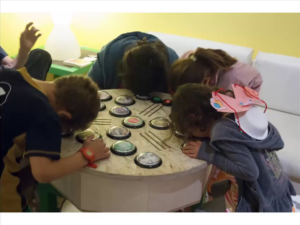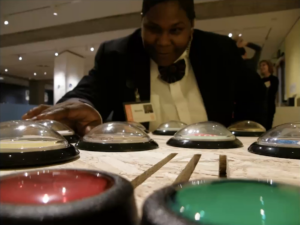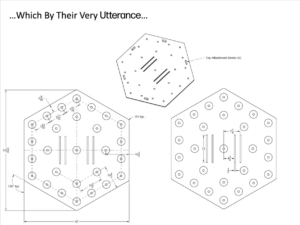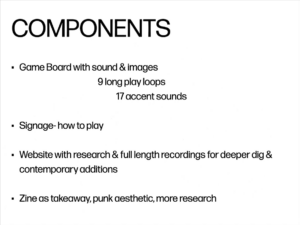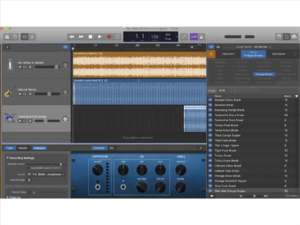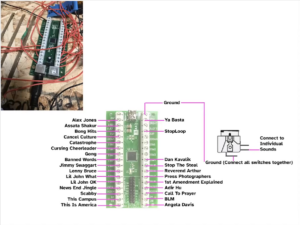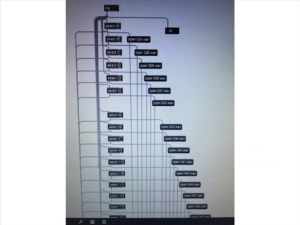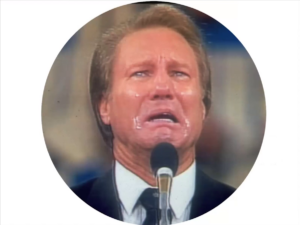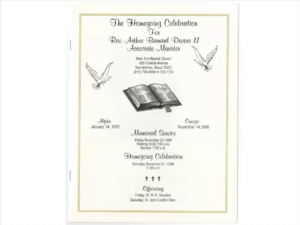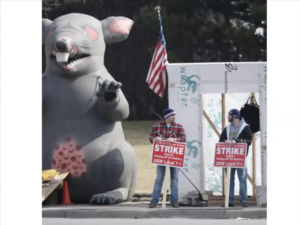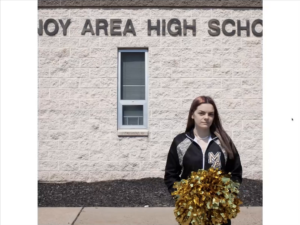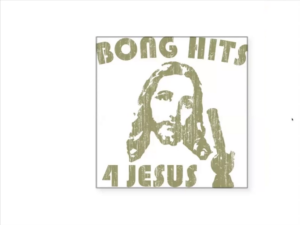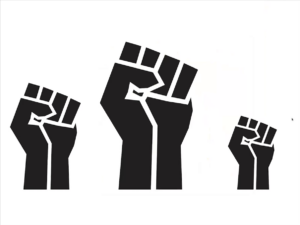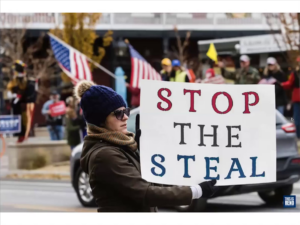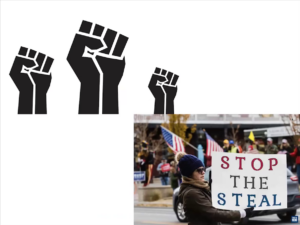Golan Levin: Welcome back to Shall Make, Shall Be. Our first speaker this evening is Lexa Walsh, who makes projects, exhibitions, publications and objects, employing social engagement, institutional critique, radical hospitality and community-building. Her upbringing as the youngest child of fifteen informs her work, as does practicing collectivity while coming of age in the post-punk scene of the 1990s Bay Area. Embedded in her practice, she works as an arts laborer, organizer, curator, and archivist. Walsh has founded or co-founded several arts platforms including the Heinz Afterworld Lounge, an experimental music venue; Toychestra, an all-women, all-toy instrument ensemble; Oakland Stock, a branch of the Sunday Soup crowdfunding network; and most recently the Bay Area Contemporary Arts Archive, a platform for the preservation of arts ephemera.
Walsh has also worked as an artist-in-residence and/or curator at a variety of arts institutions, including a term as Social Practice Artist-in-Residence at the Portland Art Museum, and several years as a curator and administrator at CESTA, a Czech art center. She holds an MFA from Portland State University’s Art and Social Practice programs, and a BFA from California College of Arts and Crafts.
Friends, I’m pleased to introduce Lexa Walsh.
Lexa Walsh: Hi, thanks Golan. And thank you everybody for being here. I’m going to do a little screen share.
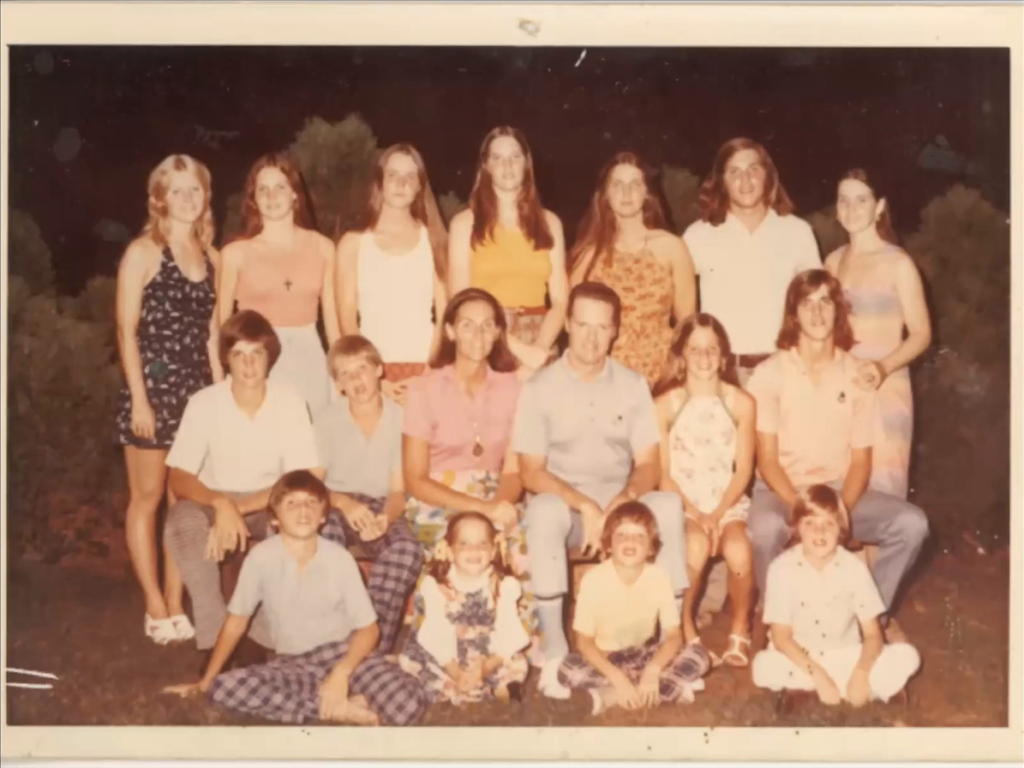
Okay. I’m Lexa and yes, I am the youngest of fifteen children. We grew up outside of Philadelphia, and I do feel that this family unit informed my practice a lot. I’m the one with the pigtails.
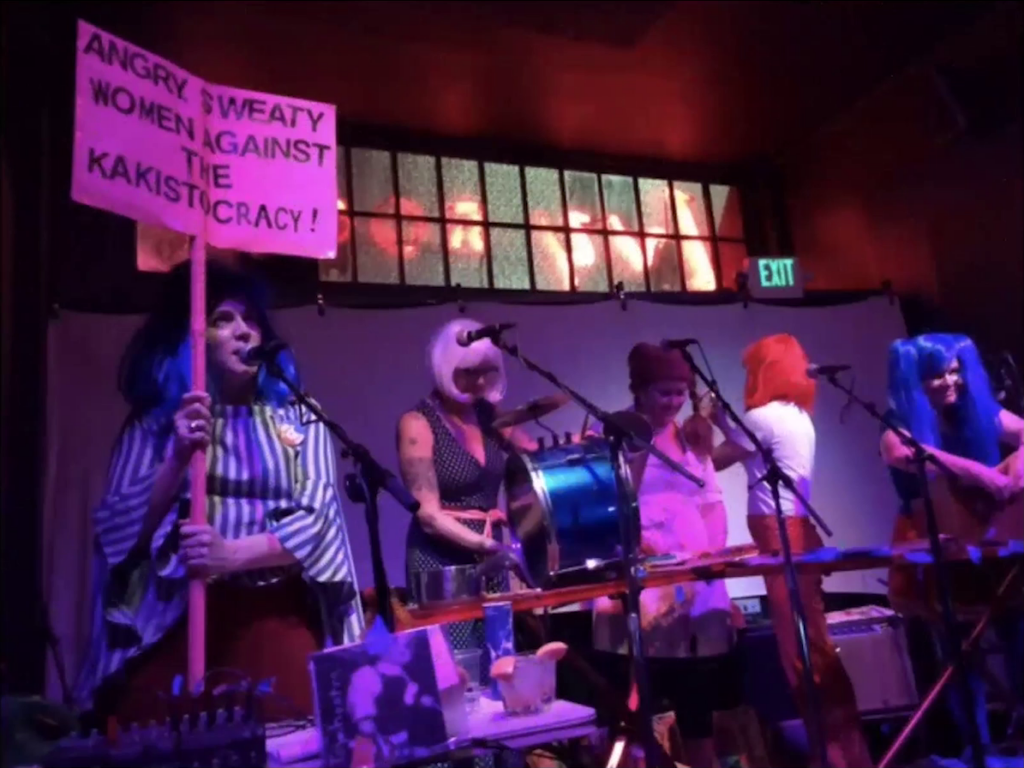
And then I grew up. And turned into a musician and artist. Probably to the dismay of my family. But I think that this band, Toychestra, that you heard about already for a second informs very much the way I approach my project for Shall Make, Shall Be.
We are five women who played entirely toy instruments and small instruments. And these are mostly analog or small electronic instruments that we would plug into contact mics. And we toured all over the place, in Europe especially. Here’s an example of a song.
[Plays opening of “Nurse” by Toychestra]
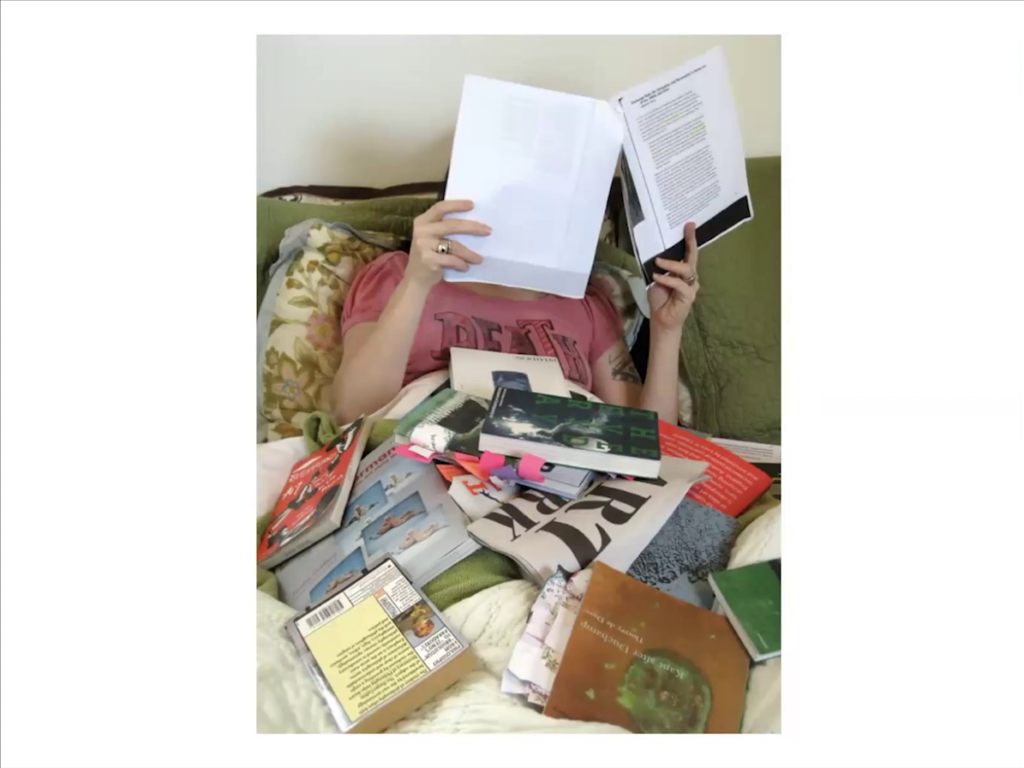
So jump forward fifteen years and I’d been playing in bands and doing participatory art projects, and I didn’t really know how to talk about them so I decided to go to graduate school and got an MFA in art and social practice.
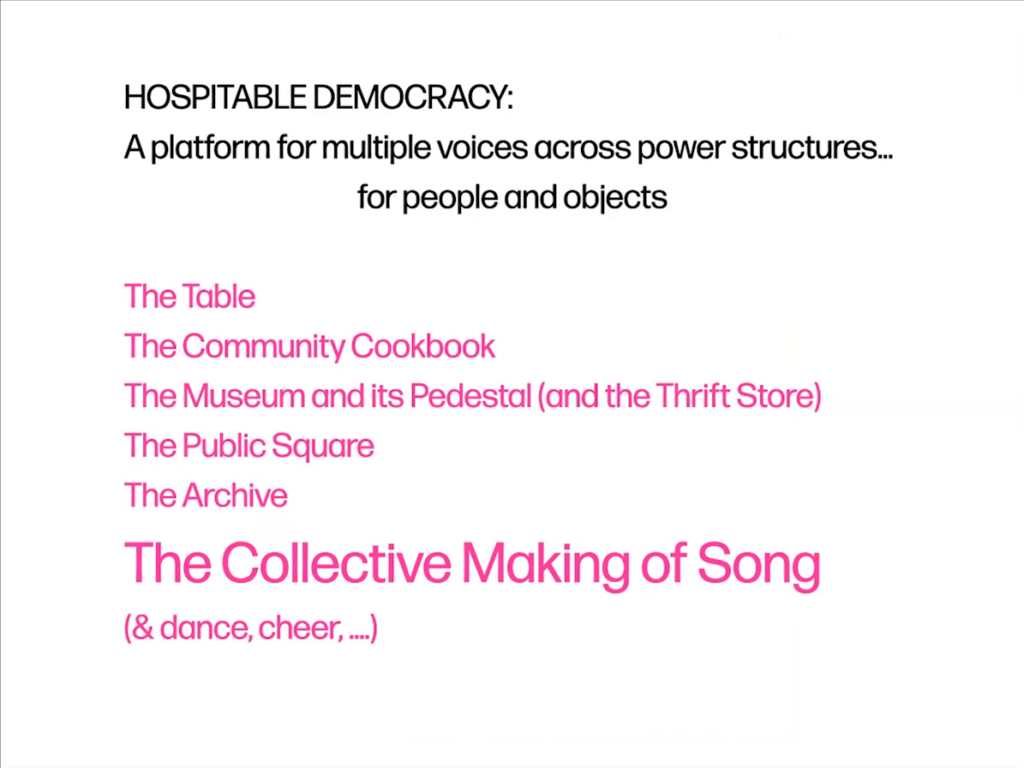
And came out with a way to collectively describe my practice, which is “hospitable democracy.” And I call it “a platform for multiple voices across power structures for people and objects.” The objects part is another discussion entirely, but some of the platforms I use are the table, the community cookbook, the museum and its pedestal, and sometimes the thrift store, the public square, the archive, and a whole lot of collective making of song and cheer and dance.
So over the years I’ve done tons of projects, bringing people together to write jingles. Or songs about art. Or songs about work. Or protest songs. Or songs about cabin fever.
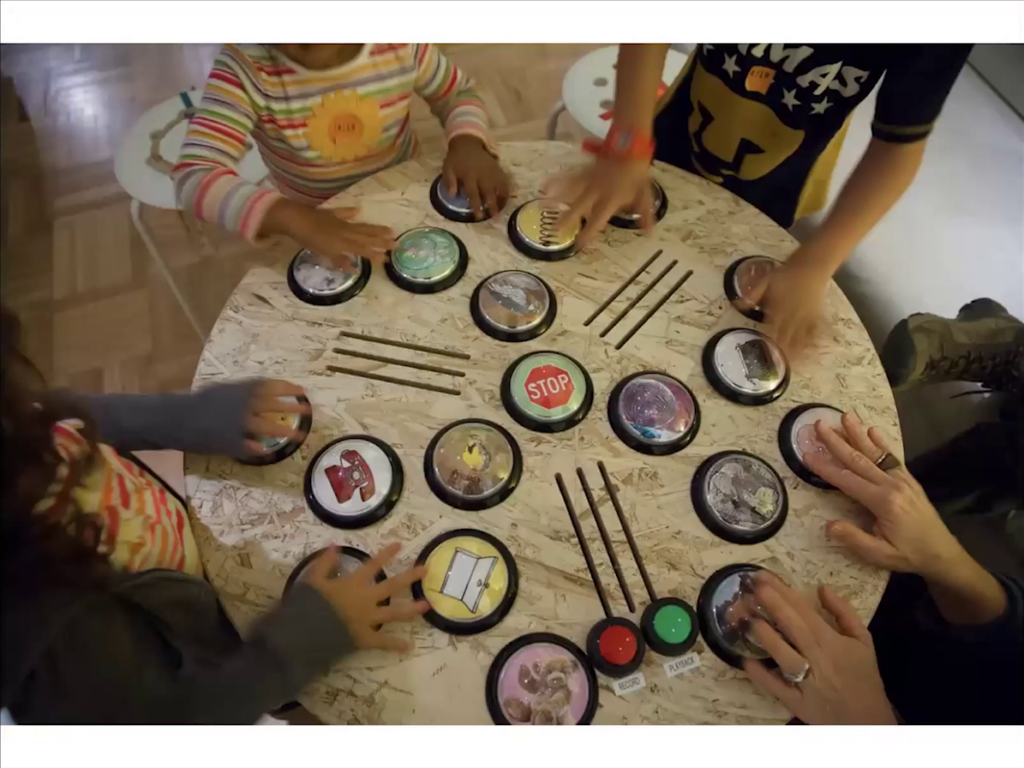
And in 2013 I was invited to work with the Oakland Museum of California’s natural history audio archives. And with those and collected sounds from the museum, I made basically a toy instrument called Sound Station. And this project I’m talking about because my Shall Make, Shall Be project is very much based on this.
So throughout the program (this was for a show called We/customize), the instrument and many other people’s works were developed and played and customized throughout the time that the show was on. And it had loops and accent sounds…
…and we banged our heads with it. [Plays an audio file of a bird screeching] That was the red-tailed hawk. And children of all ages came to play. One of the security guards, Beverly, used to come in during her break.
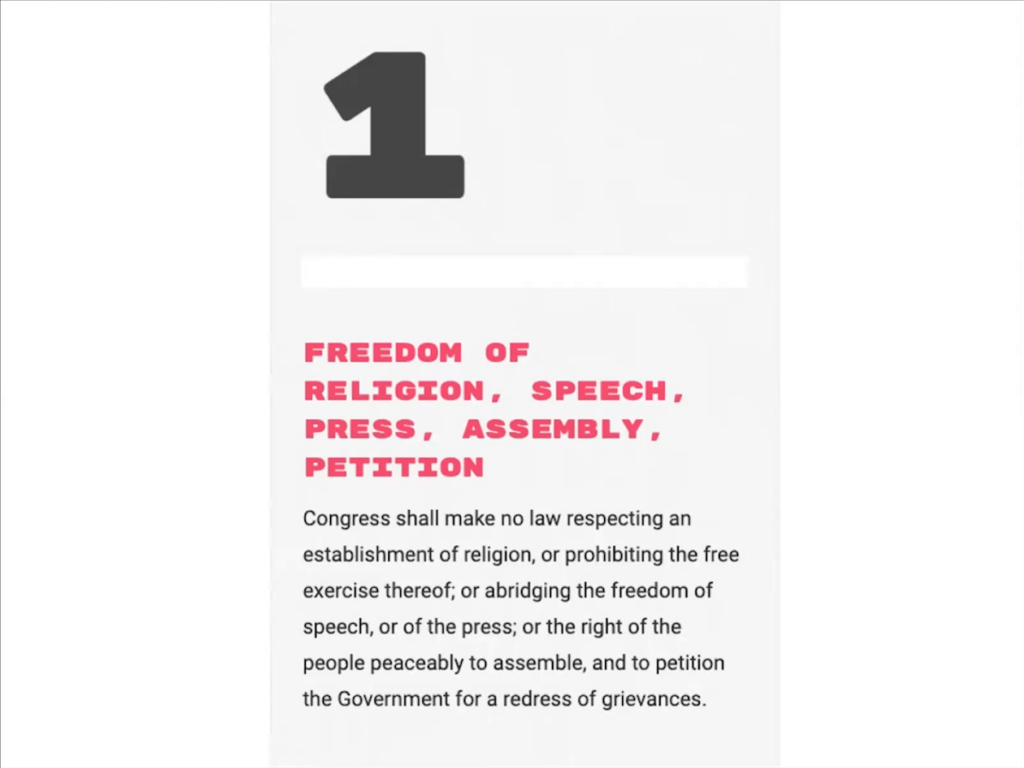
So that project and how that was played basically informs my project for Shall Make, Shall Be. I am working with the First Amendment: freedom of religion, speech, press, assembly, and petition. Congress shall make no law respecting an establishment of religion, or prohibiting the free exercise thereof; or abridging the freedom of speech, or of the press; or the right of the people peaceably to assemble, and to petition the Government for a redress of grievances.
[Plays audio clip: what does free speech for us Americans mean? It means the government can’t stop us from expressing ourselves. It can’t silence us.]
So in my project, like in the Sound Station, I have loops of sounds that express education about the First Amendment, people expressing their First Amendment rights, sounds of religion, sounds of protest, sounds of the press. And by playing this, you too are able to express your First Amendment rights. And I even express my own by Fair Use, by taking samples.
So this is the board that will be built. It’s being built in New York, which is why I don’t have a picture of the actual thing. The components are the board with sound, and there are images similar to the ones from Oakland Museum. There are nine long play loops and seventeen accents. And there’s going to be signage about how to play. So you can play polyphonically. So you can play a loop and then play the accent sounds on top of the loop. And you can cancel them…every time you hit the button it starts the sound over and over again. And I’ll explain that in real life with a toy instrument when we’re done.
There’s a web site with research and the full-length recordings of the samples, and also more samples because I can only fit so much on the machine. And then you can take a deeper dive into these samples and what they represent, legal cases about the First Amendment, and then contemporary additions. Because honestly since November when I finished the sound version of this project every week there’s a new news story about the First Amendment being tested and interpreted. And then there’s gonna be a zine as a takeaway, which will have a sort of punk rock aesthetic but it’s a way to bring the project home and hopefully continue the conversation.
So I’ve taken these samples and mixed them in GarageBand, very lo-fi. And this is what the back end looks like. It’s an I‑PAC with the samples. And this is what the program looks like on the real backend.
And so here are just a few examples. Here’s an accent of Jimmy Swaggart. [“Jesus uttered these words 2,000 years ago.”] [Sample from a Baptist church service.] “Damn your silicone!” That’s Lenny Bruce.
And then I was interested in how there’s some sort of pop culture reimaginings of the First Amendment like Scabby the Rat. And Scabby the Rat has become this kind of hero of First Amendment rights. [“Scabby, Scabby.”]
Or the cursing cheerleader, Brandy Levy. [“I was a 14-year-old kid. I was upset, I was angry.”]
Or, [echoing “Bong hits for Jesus”]
And I have protests that I’ve been to. [Sound of protest crowd chanting “Black Lives Matter.”] And protests I haven’t been to. [Sound of protest crowd yelling “Stop the steal.”]
[Then plays them overlapping.]
And I’m interested in what happens when you listen to those together. Or side by side. Or combine three different religious sounds together. Like what conversations can come out of juxtaposing these different sounds.
So, if you want to hear more about Toychestra, there’s a great video, and you can just copy that link. And then more about my practice is at lexawalsh.com and I will stop sharing. Thanks so much.
I just want to give you…
Levin: Are you gonna demonstrate something, Lexa?
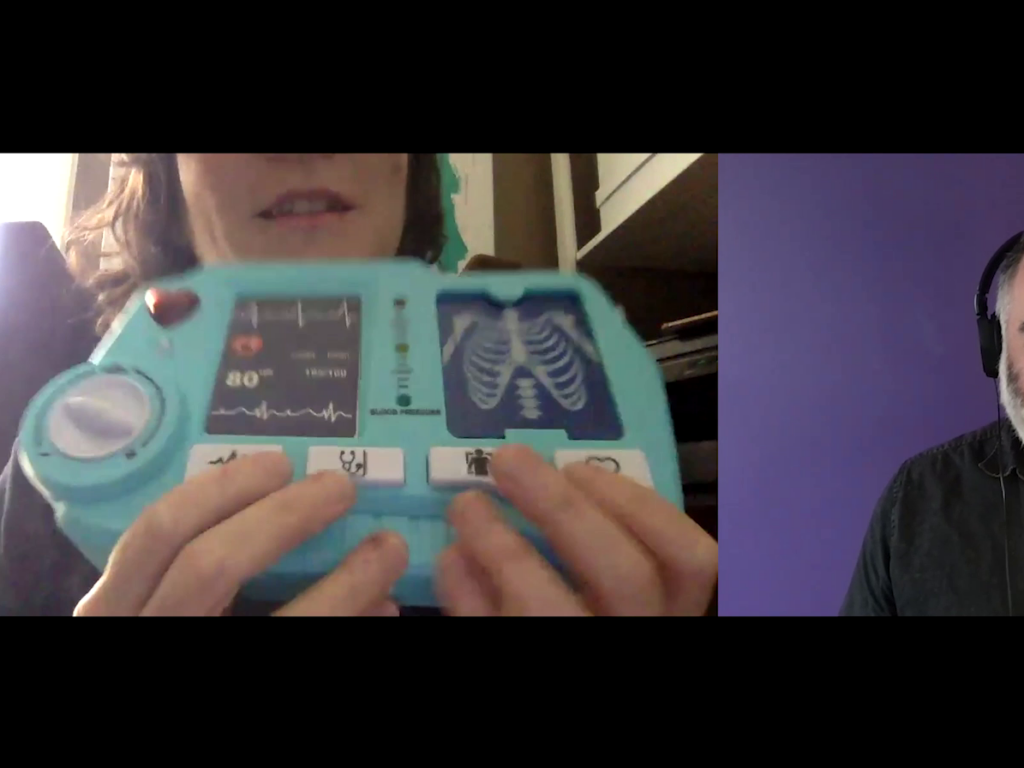
Walsh: Yeah. Very low-fi, but this is how you play a toy instrument.
